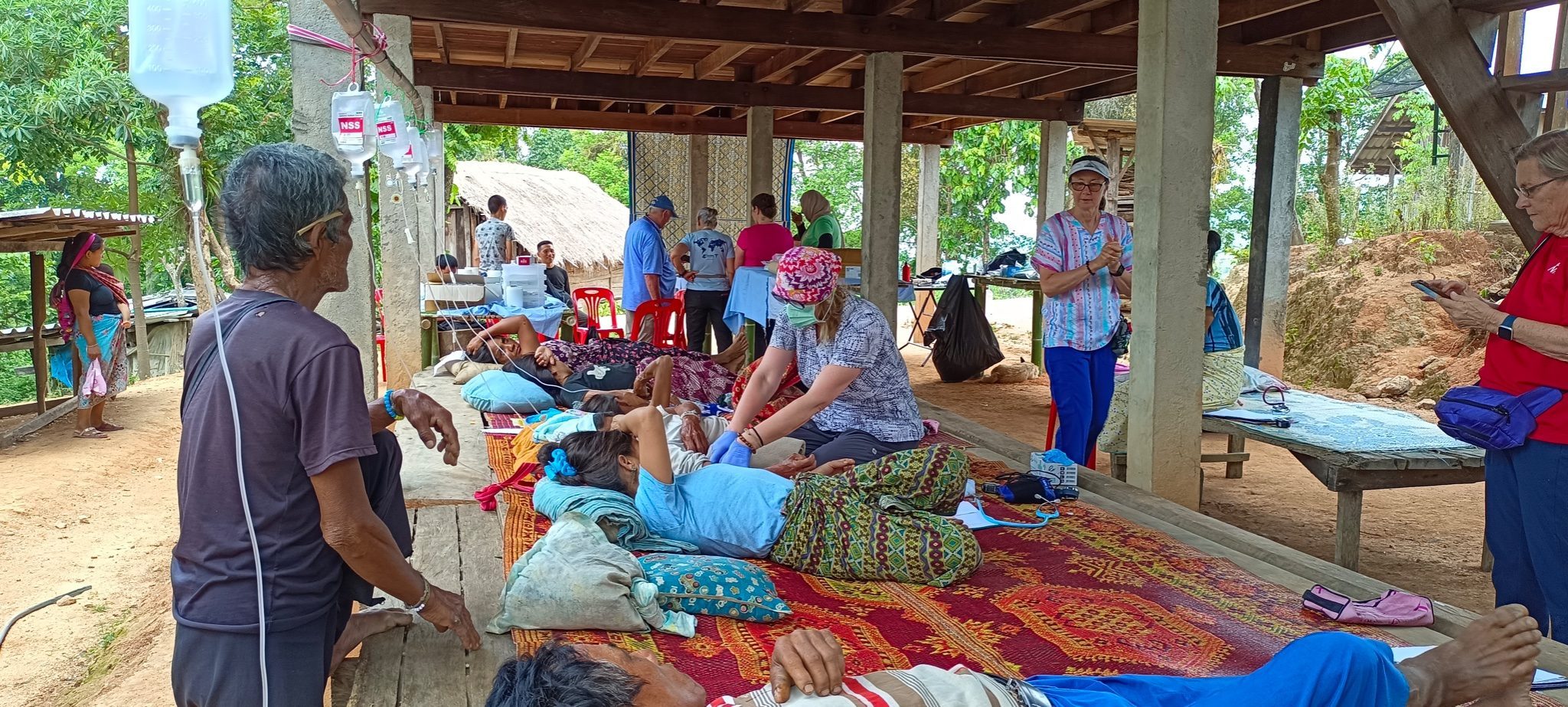The people who live in the shadows of Thai society suffer not only from the lack of access to water and sanitation but also from stigma and denial of dignity and privacy.
Most hill tribes in Thailand don’t have access to sanitation facilities due to poor, lack of hygienic education and knowledge in design and construction.
For decades the villagers and kids use ground and bushes around for toilets, and the local animals like pigs, chickens, dogs consume their poos . Through contact and consumption of those animals for foods, the communities contract killer germs, parasites, worms, ticks, bacterias, and viruses that destroy the lives of communities.
Improved sanitation contributes enormously to human health and well-being, especially for girls and women. Using proper toilets and hand washing – preferably with soap – prevents the transfer of bacteria, viruses and parasites found in human excreta which otherwise contaminate water resources, soil and food. This contamination is a major cause of diarrhoea, the second biggest killer of children in developing countries, and leads to other major diseases such as cholera, schistosomiasis, and trachoma.
In those days, diarrhoeal disease was one of the leading causes of morbidity and mortality in the tribes, especially among babies and children younger than five years of age. It was estimated that up to 80% of the disease burden in the communities is attributable to poor sanitation and 85% of deaths are due to diarrhoea as almost each tribe family has at least one to two deaths.
What happened in those days is that all the sick villagers including babies and children who were treated to wellbeing got back to the same sicknesses, sicknesses related to poor sanitation.
This relapse took us to sanitation; prevention level, meeting the underlying cause, the reason why villagers got back to the same sicknesses. That’s how this sanitation came into exist on top of medical project.
The hypothesis was put into practice by asking villagers dug a hole, making a simple pit toilet where villagers’ poo, and feces are collected in the hole which prevents contamination environments around including animals and humans. Villagers dump ashes in the toilet hole to prevent unpleasant smell and flies that spread diseases.
This dry toilet system, pit toilet, was initially started in the villages due to lack of running water; soon followed by wet or flush toilet as running water system installed in villages.
The practice was very promising and dramatic with a long- lasting result; this time whenever we set up mobile clinics in those villages, where proper sanitation system installed, there are only 0-2 diarrhoea cases are seen compare to villages with no such toilets, where most cases seen are poor sanitation related sicknesses.
The achievement result is amazing and its dramatic reduction in sicknesses is wonderful.
Investments in improving sanitation will accelerate progress towards the Millennium Development Goals and save lives.
“Sanitation is a cornerstone of public health”
So, here we are, bringing long-lasting health to the communities by building a washroom called toilet for every household.
The raw materials for construction a toilet contain concrete blocks, septic tanks ( concrete cylinders), cements, sand, tin roof. All the supplies are shipped to the villages from town. It is a toilet with a shower facility. It usually takes about 3-5 days to build one toilet depending on man-power, number of people involved.
A trench is made and brick foundation is laid.
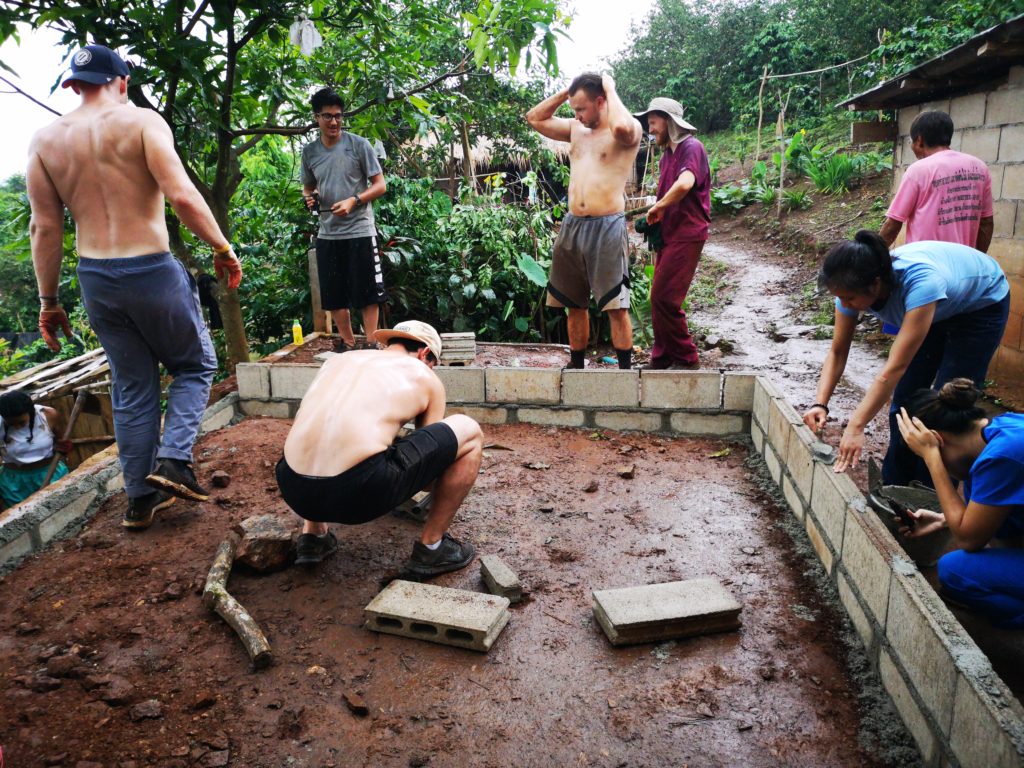
Well-aligned block-wall layers are built on top, one after the other using cements and sands. The top most last layer end up the 10th.

In the meantime, in the back of the building, a toilet’s hole is being dug to be a septic pit where 5 concrete cylinders would be buried for the poo to be collected from the toilet seat in the toilet building.
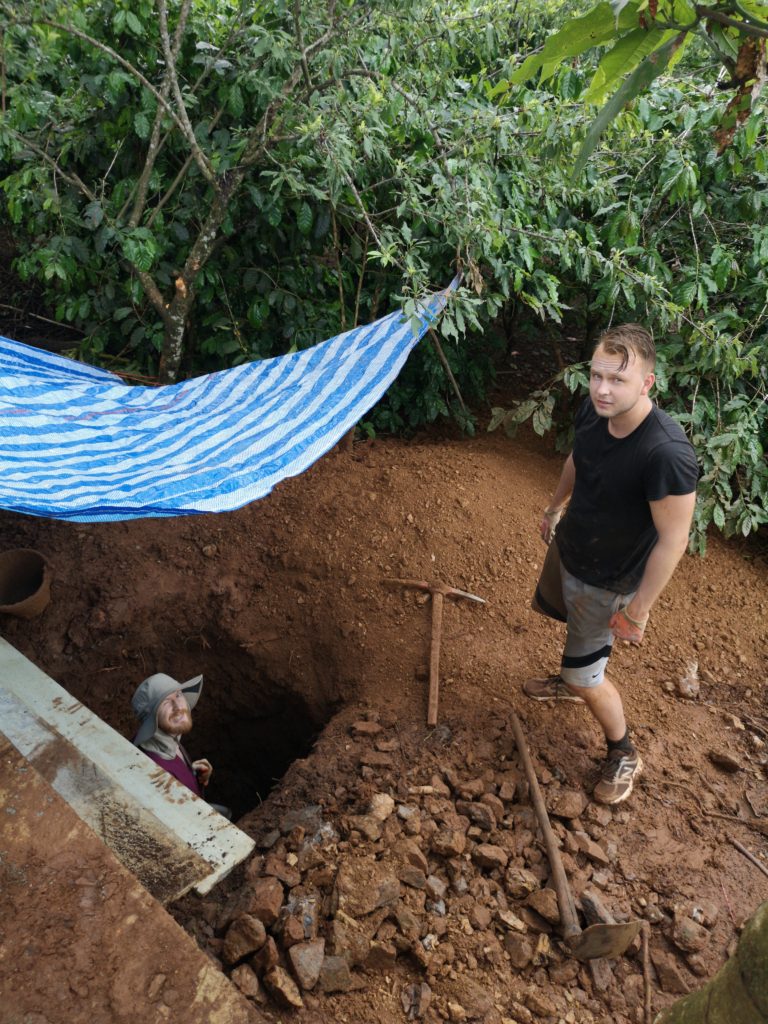
5 septic tanks are now lowering in the hole and the lid is placed on top, and ready to be buried completely with a gas pipe on the lid.
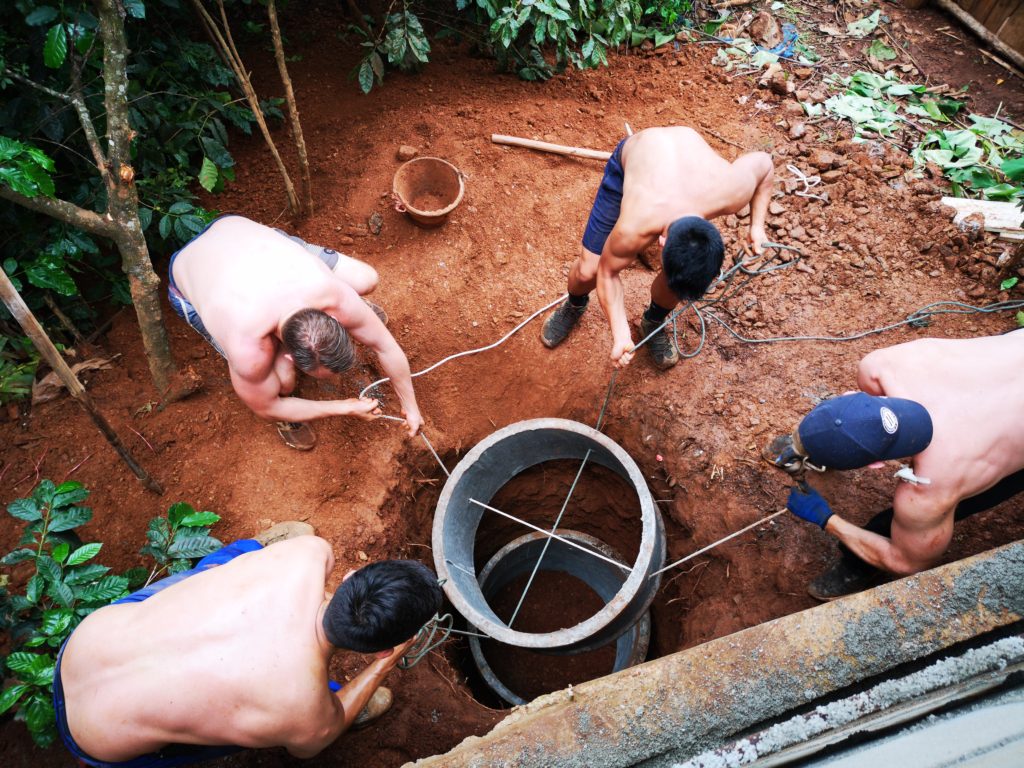
4-5 cylinder septic tanks are buried in the back of the toilet or washroom to collect human poos.
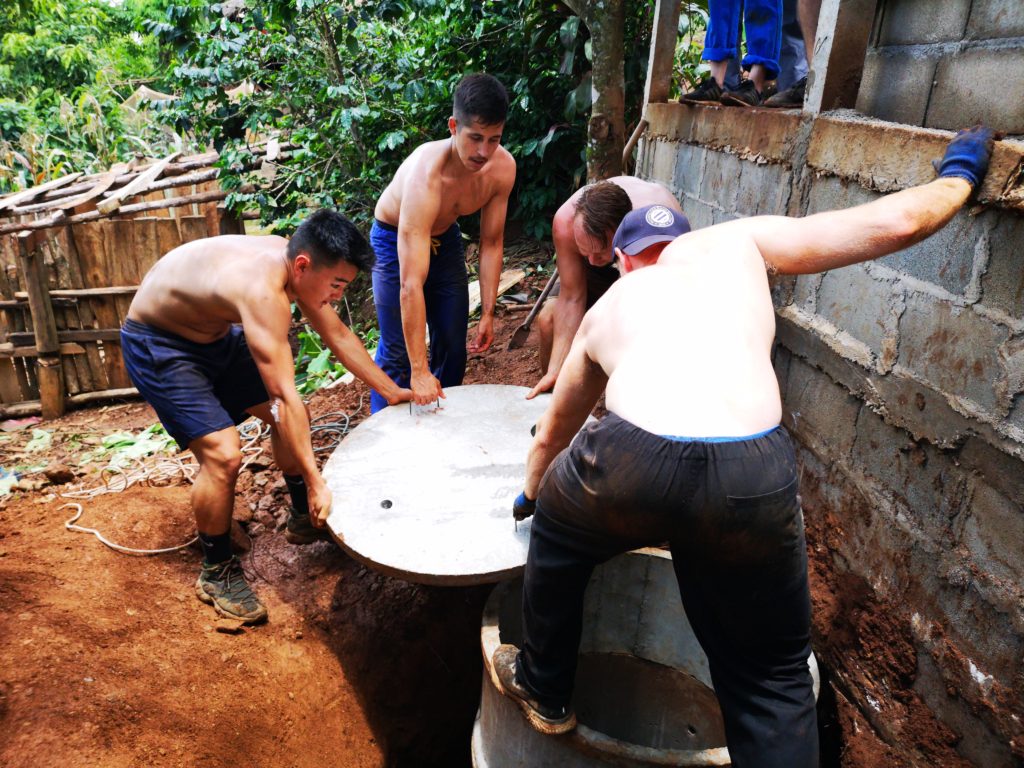
A newly constructed toilet with a wash room facility .
The toilet seat here is connected to septic tanks buried in the back for poo collection and decomposed.
Surprisingly the septic tanks remain buried in the back forever without filling full.
The toilet floor is cemented and paved.
The big water tank seen is used for washing and shower, and the smaller one is for flushing the toilet.
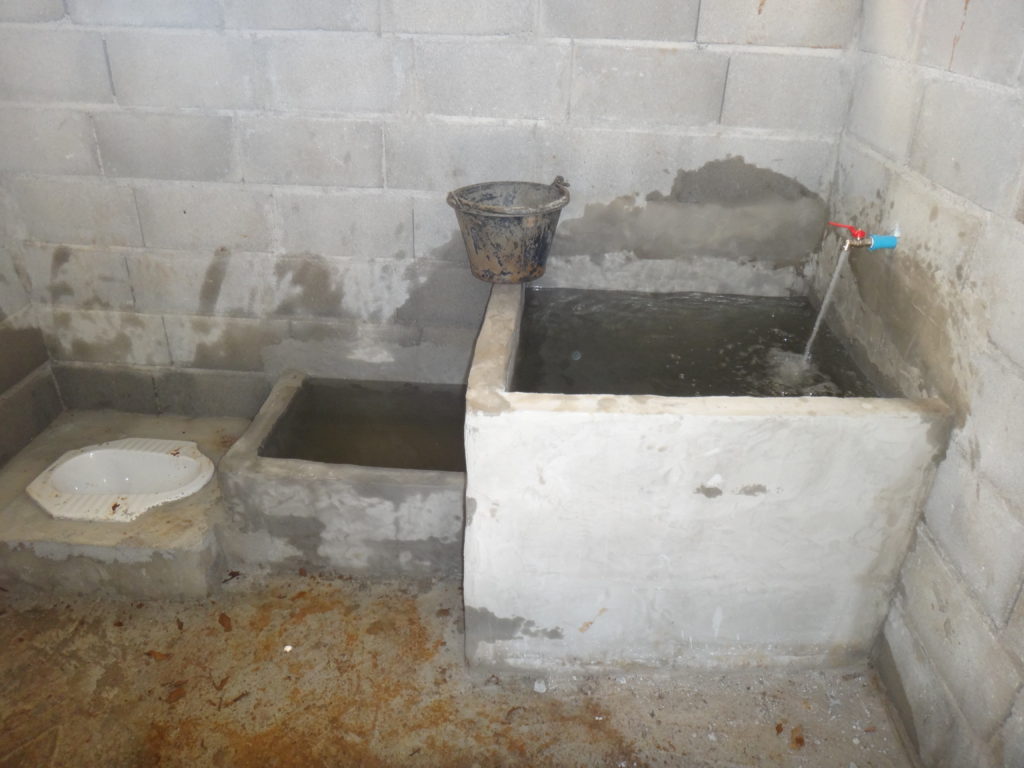
A newly constructed washroom looks something like this.
Imagine this is for the first time a tribe family has a toilet and this is once in a lifetime experience for the family. Once you build a washroom it lasts almost forever.
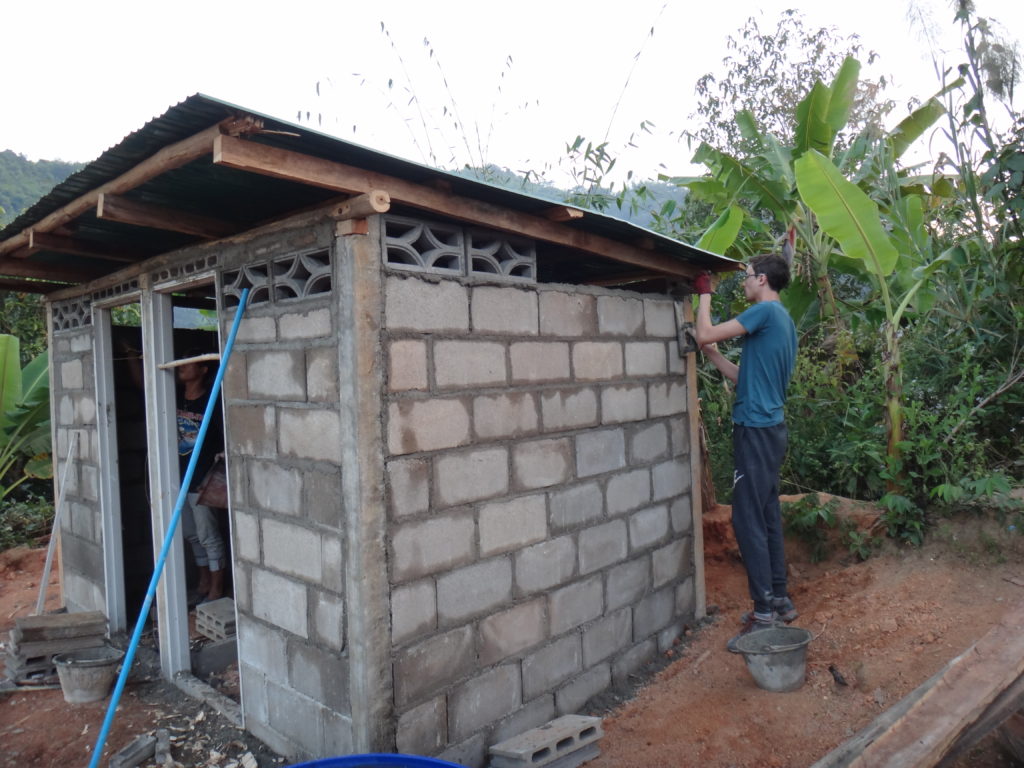
All That Is Not Given Is Lost
